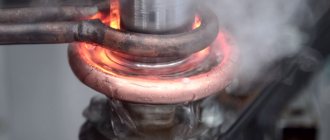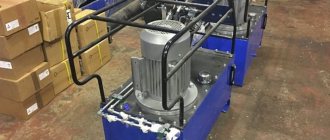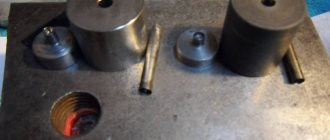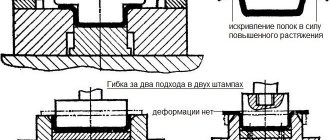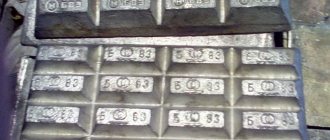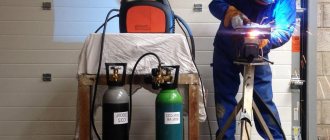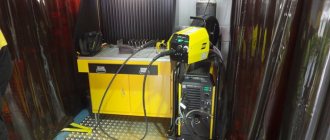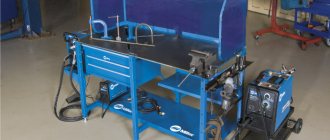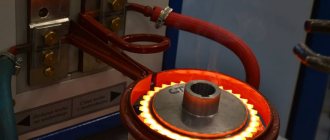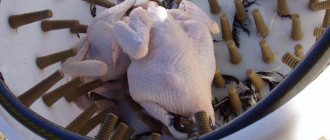It is hard to imagine performing roofing work, producing ventilation and drainage systems, as well as thermal insulation systems without reliable and functional equipment - crimping machines. This equipment is used to solve problems related to edge bending operations, flanging on the edges of pipes, and forming.
Depending on the workload of production, as well as the thickness of the sheet metal that will need to be processed, the Metal Master company offers to buy a manual or electromechanical zig machine. The metalworking equipment under consideration is most in demand in the construction industry, when it is necessary to create elements of air duct, ventilation and drainage systems. The ergonomics and durability of the equipment will allow it to serve for many years, perfectly coping with the assigned tasks.
The technical capabilities of the zigging machine can be significantly expanded through the use of special devices, as well as a set of tools.
Design and principle of operation
The zig machine consists of several elements:
- lower, upper shaft;
- handle for rotating shafts (for manual machines);
- screw for adjustment;
- rollers with the help of which parts are processed;
- gears transmitting rotational force between moving shafts;
- housings made of impact-resistant materials;
- cast bed for stable holding of the machine.
Regardless of whether the installation is equipped with an electric drive or not, there are no significant changes in the design or operating process. Zigovka is carried out in several stages:
- The parts are fixed between movable rollers.
- The shafts are aligned to securely hold the workpiece.
- The operator begins to rotate the handle or starts the electric drive.
The workpiece begins to rotate behind the shaft. The depressions are formed under the pressure of the protrusions on the rollers.
Machine structure (Photo: Instagram / stankoprom)
Classification of serging equipment by drive type
The simplest, both in its design and in its operating principle, is the manual zigovochny machine. All manipulations with such equipment, as its name suggests, are carried out manually. Such manipulations, in particular, include: pressing shafts with working rollers, for which a special handle located in the upper part of the device is used; scrolling the rollers together with the workpiece sandwiched between them: this action is also performed using a special lever-type handle.
To effectively use the simplest manual type crimping machine, certain skills and dexterity are required, since its operator must simultaneously turn the handle and hold the workpiece in the required position, thereby using both hands. Due to the low power of the drive installed on it, a manual creasing machine can be used for processing sheet blanks whose thickness does not exceed 1.5 mm.
Manual crimping machine is suitable for occasional use in the home workshop
A more powerful, productive, but also more expensive in terms of cost is an electrically driven staking machine. Such zigging machines are most correctly classified as electromechanical equipment, since their design also includes a manual mechanical drive, which ensures compression of the sheet workpiece between the working rollers. Due to the electric drive of such equipment, the working rollers rotate and, accordingly, the rotational movement of the workpiece being processed.
The electric drive of the machine is switched on and off using a foot pedal, so that both hands of the operator always remain free to manipulate the workpiece. The presence of an electric drive, which is equipped with such beading machines, as mentioned above, significantly increases their productivity, which makes it possible to successfully use these machines to equip enterprises producing metal products in large batches. In addition, the power of such a machine allows it to be used for processing sheet metal workpieces, the thickness of which reaches 5 mm.
Electromechanical creasing machines, as a rule, can be equipped with additional devices for processing workpieces of complex configurations
Sealing machines can also be equipped with a hydraulic drive, which further increases the power of the equipment. The technical capabilities of such machines make it possible to successfully use them for processing sheet metal of even fairly significant thickness. The hydraulic drive of this type of beading equipment is responsible for pressing the working rollers to the surface of the workpiece, and their rotation and, accordingly, the movement of the workpiece is provided by an electric drive mechanism. Despite all the advantages that hydraulic crimping machines have, they also have disadvantages: large overall dimensions and significant weight, which is why such equipment is mainly used by large manufacturing enterprises.
Varieties
Sealing machines are classified depending on various factors. By drive type:
- Manual. Simple designs that begin to work after applying physical effort. The position of the rollers is changed manually. Manual beveling is not used for working with thick metal.
- Electrical. In terms of power, these models are considered average. The shafts rotate thanks to an electric motor. Electromechanical creasing machines are more expensive than manual ones, but they can process sheets of large thickness.
- Hydraulic. Powerful equipment. A special feature of hydraulic machines is reliable clamping of the rollers. Disadvantage - large dimensions, large mass.
A separate classification relates to the size and weight of equipment. There are compact, portable models that are easy to transport. Large-sized machines have been developed for enterprises that are suitable for mass production.
Selection principles
When purchasing a crimping machine you need to consider:
- dimensions of equipment, premises;
- type of drive;
- roller material;
- control system;
- number of rollers;
- thickness of metal for the manufacture of housings and moving elements.
We must not forget that there are different types of videos. They vary in shape. You need to think in advance about the purpose of using the installation and purchase a set of consumables.
Compact machine (Photo: Instagram / metalmaster_stanki)
Advantages and disadvantages
Advantages:
- mobility of hand models;
- ability to work with parts of different thicknesses;
- Ease of Management;
- low price;
- long service life;
- the ability to join metals that cannot be processed by welding.
To work with parts of large thickness, an electric or manual drive is not enough. You need to buy expensive hydraulic equipment, which takes up more space.
Manufacturers and price
There are various brands of manual, electric, and hydraulic crimping machines sold in the market. The cost depends on brand awareness, drive type, power, and performance. Manufacturers:
- JET;
- MetalMaster;
- Isitan;
- Stalex;
- Proma;
- Schulze;
- IKMN;
- STS.
The average cost of manual installations is 15,000 rubles.
DIY making
If you wish, you can assemble a manual zig machine with your own hands. To do this, it is enough to find a drawing, prepare materials, tools, and perform the work.
Do-it-yourself piecing machine (Photo: Instagram /lodkakhv)
Preparation
Before you start assembling a manual zigging machine, you need to prepare tools and consumables:
- drill with metal drills;
- a small grinder with discs;
- welding machine;
- two shafts;
- gears for transmitting force between shafts;
- metal corners, profiles, sheets for the manufacture of beds, frames, housings;
- fasteners;
- handle for rotating moving parts.
- screw for adjusting, pressing the shafts.
Assembly steps
When assembling equipment, you need to consider the following nuances:
- The lower shaft must be stationary, the upper one must move within a range of at least 12 mm.
- Side stops should be installed to prevent the shafts from moving to the side when working with workpieces.
- To transmit force, gears are used, which should not be less than 60 mm in diameter.
- Secure the shafts so that they can be changed during operation of the equipment.
- Welding equipment is used for the manufacture of frames, housings, and beds.
- To make the case, it is enough to use metal sheets with a thickness of no more than 5 mm.
The handle can be made from handles from any old machine. If commercial rollers are not suitable for the finished unit, you will have to create them yourself. For this you will need a lathe.
Electromechanical zig machines are more difficult to manufacture. To do this, you need an electric motor with a speed controller, a belt drive, and a control panel.
Principle of operation:
- The workpiece is placed on a work surface with a lower roller. Then you need to lower the raised upper shaft with the installed roller;
- Fixation of the workpiece must be done with clamping screws;
- The presence of a special stop allows for deeper punching of the relief;
- When applying relief to sheets of aluminum and copper alloys, as well as other soft metal, it is necessary to increase the distance between the ridge grooves and, accordingly, their radius;
- The work proceeds as follows. Pressure on the workpiece will be exerted due to the rotation of the shafts in the opposite direction with respect to the rollers. As a result, the necessary relief depressions appear. Mission accomplished.
Exploitation
For home-made or purchased models of staking machines, there are a number of operating rules:
- Check the integrity of the rollers, gears, and the location of the shafts before starting work.
- Turn the handle several times without the workpiece to eliminate defects.
- Keep your hands as far away from the treatment area as possible. Do not wear long sleeves.
- Do not attempt to connect parts of large thickness. Excessive effort will lead to material damage and equipment failure.
- Do not overload the electric motor.
- Lubricate moving parts with machine oil at least twice a month.
- Check the accuracy of the workpiece alignment between the rollers.
Metal beading is a simple process that anyone can do.
Metal creasing machines are used to carry out various technological processes. With their help, you can connect metal pipes and increase the strength of individual parts. You can make a homemade hand loom for your home.
Areas of application for creasing equipment
Equipment designed to perform beading, even though the name of such a technological operation is familiar mainly to metalworking specialists, is actively used in various fields of activity. Sealing machines are practically indispensable for the manufacture of elements of roofing structures, in particular, for the formation of their edges.
Examples of drainage elements made on a crimping machine
It should be noted that in the construction industry, bending machines have found very wide application. Using such machines, in particular, the following elements of building structures and communication systems are made from sheet metal: parts of drainage and air duct systems, insulation for heating mains, etc. In the construction industry, manual staking equipment is predominantly used, since it is characterized by its small dimensions and insignificant weight, does not require an electrical supply for its operation and can be used almost anywhere.
The creasing machine can also be used to reliably connect cylindrical workpieces made of thin sheet metal together. Rollers for equipping a zig machine of this type, when a cylindrical workpiece passes through them, form locks on it, with the help of which the two parts are connected.
Rolling the lock on the air duct elbow
When making connections using locks, unlike welding, there is no thermal effect on the metal parts, which eliminates the possibility of their warping. In addition, such a machine, which you can also make yourself, does not require any additional consumables for its use.
To expand the functionality of a staking machine, including a manual one, it can be equipped with additional working parts. Machines equipped in this way can be used not only as creasing equipment, but also as bending and profiling equipment. Modern creasing machines for industrial use are often equipped with automated control systems, which increases their productivity and accuracy of technological operations performed with their help.
Special attachments allow you to make folds for connecting thin-walled pipes
